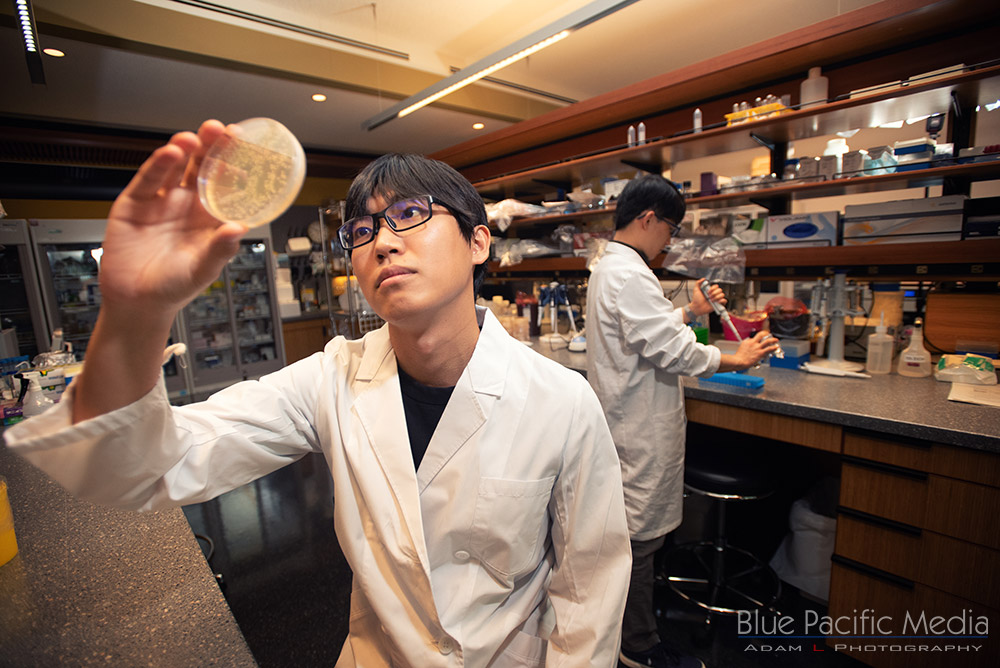Hello, everyone! Welcome to the online campus tour of Okinawa Institution of Science and Technology Graduate University!In this tour, we will show you parts of OIST that you usually don’t see. Hope you enjoy it!






This is the entrance of OIST. Here, you can see the research and activities of OIST while you walk through the tunnel.
Auditorium is a place where the researchers from around the world get together to discuss their research or socialize with each other. Here, we also hold cultural events such as concerts and traditional performance arts.
Child Development Center takes care of the children of OIST employees at the ages between 0 and 6. Its vicinity to the work place allows the parents to get to their child quickly when necessary.
This is the Skywalk, that connects the center building and the lab. Underneath the skywalk is the rich Yanbaru forest. This is the most popular spot as you can take a walk in the air and feel like a part of the beautiful nature of Okinawa being at the OIST campus.
This is the statue of the late Dr. Sydney Brenner, the scientist who received Nobel Prize in Physiology or Medicine in 2002. Dr. Brenner played a critical role in the establishment of OIST. He has been watching over the OIST’s growth even after he had deceased in 2019.
The next places are the café and restaurant, which get busy with students and visitors during lunch time. As a lot of customers are from overseas, vegetarian menus are also available. We highly recommend you to come and enjoy a meal here!
The landscape here is astonishing!
Let’s take a small break here and take a look at OIST from outside. OIST was built in the nature-rich location in Onna Village, with efforts to minimize the harm on the surrounding natural environment as well as animals and plants.
The External Engagement Section carries out science education programs for junior and senior high school students in science course to help them deepen their interests and knowledges in science so that they can take steps forward to realize their future dreams.
The External Engagement Section also hosts Information Sessions to introduce research activities and school lives of OIST students. This is a great opportunity to talk to us face to face. High school students are also welcomed to this event. We are looking forward to meet future scientists like you!
OIST has researchers from around the world, and we use English language here. The Language Education Section provides support for students for English discussions and research papers as well as staff for their daily tasks.
This is our library. It is open for 24 hours, providing a relaxing environment for the students and researchers to study. The users can access electronic books and academic journals from anywhere.
Okinawa Environmental Research Support Section operates OKEON Churamori Project. In this project, we collect insect samples and data such as images and audio, weather, and land use. By storing environmental samples and data, the researchers study the impacts on nature and people in Okinawa. We will also share the findings with the public through environmental education and activities to address local environmental issues such as invasive ants to contribute to achieving the SDGs of Okinawa.
A microscope is a tool for looking into an extremely tiny world which cannot be seen in human eyes. It allows us to observe what’s inside the bodies of creatures and cells.
The light of a microscope contains many colors like a rainbow, and different colors show different objects. Using a specific color of light allows us to see what we are looking for.
At OIST, we use these microscopes to observe a variety of things. For example, when we look at the brain, we can see individual nerve cells and find out how many of them are there.
The Fluid Mechanics Unit studies how physical matters such as liquid and gas move and interact with other physical matters. For example, the researchers study objects such as an influence of rainfall power on storm intensity and the degree of danger of storms triggered by a global warming.
The Cognitive Neurorobotics Research Unit studies how small children learn to grasp and move objects through practice and instructions from others. To understand this, the researchers investigate how learning takes place by implanting an artificial brain in a robot and having it replicate the behavioral learning.

